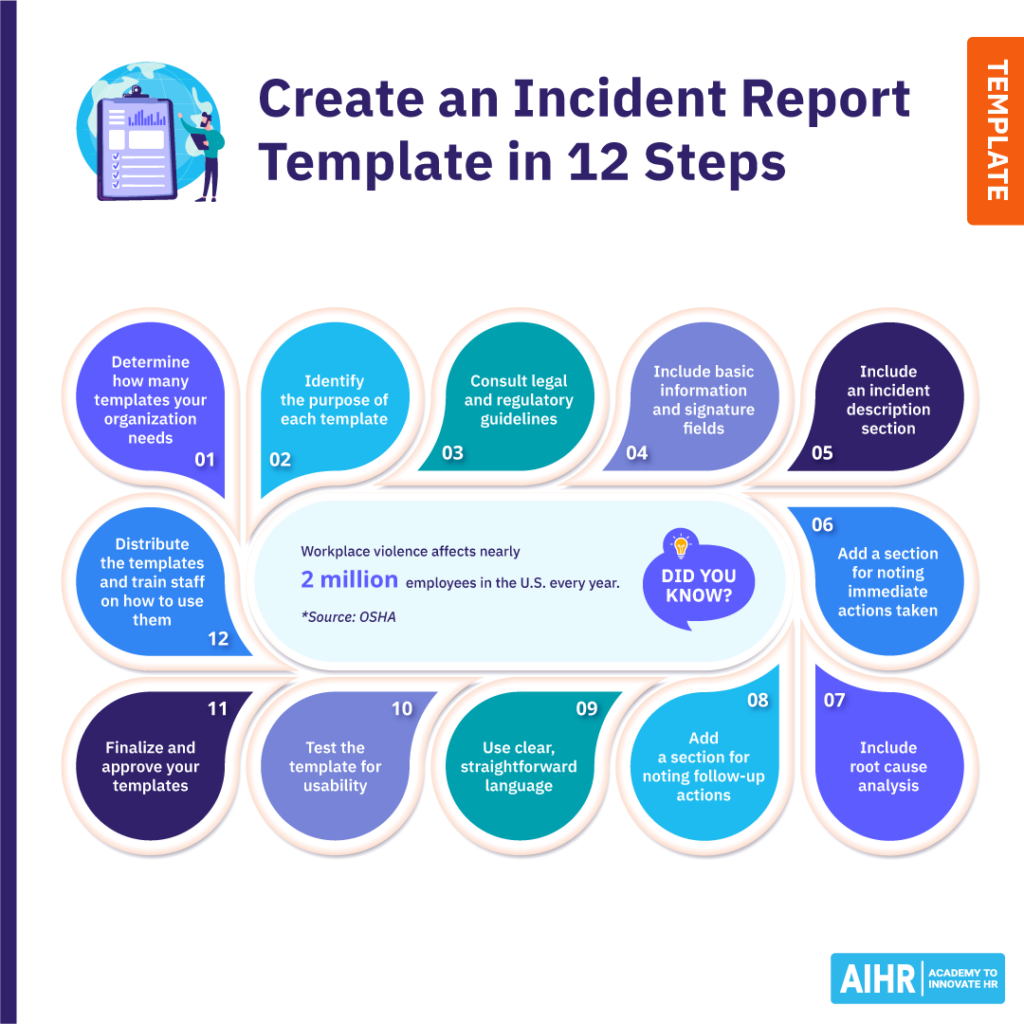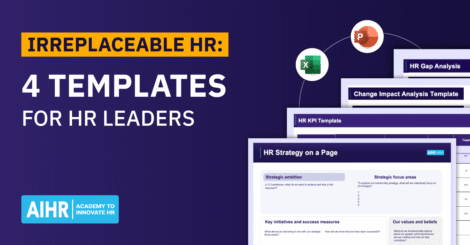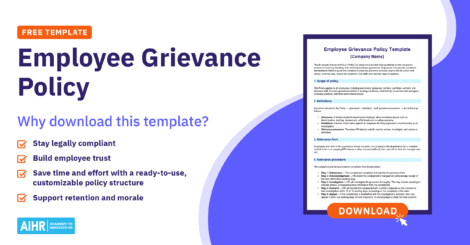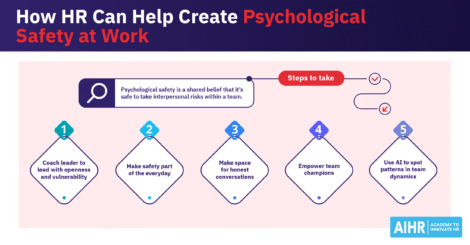Employers have a moral and legal obligation to keep their employees safe. This means having the right processes and tools to manage and mitigate workplace incidents, such as a well-designed incident report template.
Due to businesses implementing stricter Occupational Safety and Health Administration (OSHA) standards, workplaces in the U.S. have become considerably safer since 1970. Worker fatalities dropped from 38 deaths per day, then to 15 per day in 2023, and worker injuries and illnesses fell from 10.9 incidents per 100 workers in 1972 to 2.4 per 100 in 2023.
Still, organizations must work harder to reduce these numbers further and combat other issues, like workplace violence and external threats like cyberattacks, which are on the rise. This article discusses how to do so via effective incident reporting and includes a free incident report template you can download and use.
Contents
What is an incident report?
Why you need a detailed incident report template
11 steps to create an incident report template
Incident report template: Word
Incident report template checklist
FAQ
What is an incident report?
An incident report is a formal document that provides a detailed account of a specific work-related event. This could be an accident or injury, damage to company assets, a physical altercation between coworkers, or some other violation of company policies.
The main purposes of an incident report form are to:
- Provide official documentation: It creates a permanent record of the event, which may be necessary for future reference or investigations.
- Offer legal protection: Incident reports can help protect your company from potential legal issues the event may result in.
- Prevent future incidents: Understanding the root causes of workplace incidents can help you implement measures to prevent them in the future.
- Enable trend analysis: Repeated accidents may signal an underlying problem the company must address. By identifying and analyzing patterns in incident reports, you can pinpoint risks and prevent future occurrences.
- Maintain a safe, compliant workplace: Employers have a duty of care to their workers and customers. Incident reporting is an essential HR tool for creating a safe workplace that complies with relevant laws and regulations.
HR tip
Consider forming a workplace safety committee of employees and managers passionate about workplace safety. This not only promotes a safer environment but also encourages employee participation. This committee can help evaluate incident report templates, analyze incident data, and implement corrective and preventive actions. Involving employees in safety initiatives can also foster a culture of ownership and accountability, leading to a more proactive and practical approach to workplace safety.
Types of incident report forms
Having different types of incident report forms for different types of incidents helps improve the incident reporting process by making it easier for you to categorize and analyze each one. Common types of incident report forms include:
- Employee incident form: This documents events involving employees, such as accidents, theft, fraud, or misconduct.
- Injury incident form: This form records details about workplace injuries. It includes information about the nature of these injuries, the circumstances surrounding the incidents, and any witnesses involved.
- Safety incident form: Similar to an injury incident form but with a broader scope, this form documents any event that poses a potential safety hazard. This includes near misses, unsafe conditions, or incidents that could have or nearly resulted in injury or property damage.
- HR incident form: This document is specific to incidents directly impacting HR or its functions. Examples include complaints about discrimination, harassment, or breaches of employee privacy.
- Behavior incident form: This form focuses on incidents related to employee behavior, such as bullying, workplace violence, hate speech, and other inappropriate conduct.
- Cybersecurity incident form: This document covers incidents involving your company’s IT systems or networks. It helps to track data breaches, unauthorized access, and other security threats.
HR tip
Anonymous incident tip-offs: HR should actively encourage employees and managers to report incidents without fear of reprisal. However, if employees are reluctant to report inappropriate behavior from managers or colleagues for fear that it could lead to conflict, tension, or retaliation, consider establishing an anonymous incident reporting channel. This can encourage more honest, accurate reporting of policy violations and other workplace misconduct.
What is HR’s role in incident reporting?
HR plays a critical role in facilitating an organization’s incident reporting process in several ways. Firstly, as part of the HR department, you’re responsible for creating and maintaining your company’s incident reporting policy.
This policy should outline a clear procedure for reporting incidents, what information to include in a report, and the steps the organization must take to investigate and resolve reported incidents.
Next, you should also train employees on reporting incidents promptly and accurately. This training should cover how to identify an incident, what steps to take to ensure safety, and how to complete an incident report form.
Thirdly, once the policy is in place and you’ve trained employees, you have to oversee the process of gathering information about workplace incidents.
Finally, you should use the incident data you collect to improve workplace safety and policies. By analyzing incident report forms, you can identify common causes of workplace incidents and develop targeted safety training programs. You should also use incident data to assess the effectiveness of your organization’s existing safety policies and procedures.
“HR plays a key role in using data to identify trends that can improve the workplace experience. Accurate and consistent incident reporting is a great source of insight to suggest proactive actions to drive employee safety and create a healthy work environment.”

Why you need a detailed incident report template
A well-structured incident report template will help you streamline HR processes and improve your organization’s overall efficiency. Here’s why:
- Consistency in handling incidents: A formal template ensures all reports follow the same format, making it easier for you to analyze data and identify trends.
- Completeness in reporting: A comprehensive template prompts employees to include all relevant details in their reports. This helps prevent misunderstandings and ensures you have all the necessary information.
- Improved efficiency: Standardizing the reporting process can reduce the time you need to gather and analyze information, This allows you to focus on more strategic tasks, like developing preventative measures and addressing root causes to prevent future incidents.
Dr. Veldsman says, “Partner with the office, risk, and facilities team to implement a consistent and seamless incident reporting process. They are often closer to these activities than HR, and by ensuring close collaboration, you can proactively identify how and where improvements are required.”
11 steps to create an incident report template
Here’s a step-by-step guide to help you create your own incident report template:
Step 1: Determine how many templates your organization needs
The nature of your organization’s business will determine how many and what kind of incident report templates it will need. For instance, a manufacturing company is typically more prone to workplace injuries than a professional services business.
Dr. Veldsman points out, “You must also see if there are any labor law requirements for certain types of reporting. In mining, for example, you are legally required to report employee injuries and deaths.”

Step 2: Identify the purpose of each template
Clearly define the scope of incidents each template will cover. This should include accidents, near misses, injuries, illnesses, compliance issues, workplace violence, and any other incidents relevant to your organization.
This will ensure each form captures relevant information, reducing the risk of collecting unnecessary data or missing essential details. You can then investigate, analyze, and address these incidents effectively.
Step 3: Consult legal and regulatory guidelines
Consider possible incidents in which litigation or investigation may arise to ensure your templates provide the necessary information you’ll need in those circumstances.
Ensure your template complies with all relevant safety laws, regulations, and industry standards, including those of OSHA and the Equal Employment Opportunity Commission (EEOC). You could also consult with legal counsel or HR professionals who are knowledgeable about the relevant regulations.
Learn the skills you need to report, track, and analyze workplace incidents
The ability to not just implement an incident report template but also to track and analyze workplace incidents is crucial for an HR professional.
In AIHR’s HR Metrics & Dashboarding Certificate Program, you will learn to use relevant HR metrics and dashboards to track and analyze data, including the kind you get from incident reports.
This online, self-paced Certificate Program will also teach you how to use such data to determine the efficiency and business impact of HR policies and procedures.
Step 4: Include basic information and signature fields
Include fields and sections on each form to gather essential details such as:
- The date and time of the incident
- Location of the incident
- Names of all involved parties
- Names of all witnesses (if applicable)
- Job titles and department of the complainant and their direct supervisor
- Contact information of the complainant and their direct supervisor
- Complainant’s signature and date of signing
- Direct supervisor’s signature and date of signing
- Signature and date of signing of the manager or HR staff reviewing the report.
Step 5: Include an incident description section
Provide a section for the complainant to describe the incident in detail. Include prompts or questions to guide the employee in providing relevant information, such as:
- What happened
- How it happened
- Whether there were any witnesses
- The incident’s immediate consequences
- How the incident could have been prevented.
HR tip
Don’t rely solely on written incident reports. Encourage employees to document incidents using various methods — for instance; they can use their smartphones to record photographic or video evidence of incidents if possible. This approach can provide a more accurate and detailed understanding of incidents, making it easier to identify root causes, implement corrective actions, and prevent future occurrences.
Step 6: Add a section for noting immediate actions taken
Include a section where the complainant can document the immediate actions they’ve taken to address the incident after it happened, such as first aid, emergency procedures, or notifying management. This will help ensure you do not waste time taking actions the complainant has already taken and will help the investigation progress faster.
This section will also capture the complainant’s real-time response to the incident. You can then understand how well they followed company protocols and what measures they took (if any) to prevent escalation or further harm. It will also provide insights into the effectiveness of the organization’s emergency procedures.
Step 7: Include root cause analysis
Provide a space for the investigation team to document their findings regarding the root cause of the incident. Root cause analysis investigates the underlying factors that led to the incident, helping to identify systemic issues rather than just treating the symptoms.
This information can also help you develop long-term preventive measures to ensure similar incidents don’t reoccur. Consider using a structured problem analysis approach to identify underlying causes.
Step 8: Add a section for noting follow-up actions
Include a section to track any corrective actions implemented after the complainant submits the report. The purpose of doing so is to gauge their effectiveness in preventing similar incidents and to assess the outcomes of investigations or litigation. This may involve documenting follow-up inspections, training, or procedural changes.
Tracking follow-up actions also ensures accountability in addressing the causes of the incident and any ongoing risks. It confirms the implementation and monitoring of corrective measures over time, reinforcing a culture of continuous improvement and safety.
Step 9: Test each template for usability
Conduct a pilot test with a small group of employees to gather feedback on the template’s clarity, completeness, and ease of use. This will help you assess if the templates are practical, user-friendly, and capture all necessary data without being overly complicated.
Usability tests can also reveal confusing sections or missing fields. You can then make necessary adjustments based on the user feedback before you roll out your templates and train employees on how to use them.
Step 10: Finalize and approve your templates
Once you’ve refined each template, obtain approval from relevant stakeholders, such as the Head of HR, senior management, legal counsel, and safety professionals. Approval from these key stakeholders ensures each form complies with organizational policies and legal requirements.
It also keeps them in the loop, fostering a culture of trust and collaboration. Additionally, it encourages buy-in from the departments responsible for implementing corrective actions in response to workplace incidents.
Step 11: Distribute the templates and train staff to use them
Proper distribution and training ensure staff and management both understand each form’s purpose, how to fill it out correctly, and when to use it. Training also helps avoid misuse or underreporting, improving overall incident management and safety.
In addition to providing the necessary training, make all templates readily available to all employees. Consider creating a written user guide, video tutorials, or other helpful instructional materials to support the training.
Incident report template: Word

Incident report template checklist
Are you equipped to handle workplace incidents effectively? Use this checklist to build a well-structured incident report template and process:
Template development
| ✓ | Define the list of incident templates your organization needs |
| ✓ | Identify the purpose of each template |
| ✓ | Consult legal and regulatory guidelines |
| ✓ | Include basic information and signature fields |
| ✓ | Include sections for incident description, immediate actions taken, root cause analysis, and follow-up sections |
| ✓ | Ensure the language you use is clear and straightforward |
| ✓ | Test the template for usability and make the necessary refinements |
Approval and distribution
| ✓ | Obtain approval from all relevant stakeholders |
| ✓ | Distribute the template to all employees. |
Training
| ✓ | Provide training on how to complete, submit, and review each incident report |
| ✓ | Address any questions or concerns employees may have. |
Review and implementation
| ✓ | Establish a process for reviewing and analyzing incident reports |
| ✓ | Regularly identify trends and patterns in reported incidents |
| ✓ | Implement corrective actions based on investigative findings |
| ✓ | Monitor your organization’s compliance with safety and regulatory requirements |
| ✓ | Review the templates periodically and refine them based on stakeholder feedback. |
To sum up
A well-designed incident report template helps ensure workplace safety and compliance. By following a structured approach to incident reporting, your organization can not only document workplace incidents but also understand their root causes. It can then address risks, prevent future occurrences, and foster a culture of accountability and transparency.
Incident reports can also facilitate cross-functional collaboration and inform data-driven improvements in your safety policies. Standardizing the reporting process and providing the necessary training can ensure prompt, accurate reports. Ultimately, effective incident reporting helps create a safer, more compliant work environment.
FAQ
Start by describing the incident in clear, straightforward terms. Be sure to include the incident’s date, time, and location. Next, explain who was involved and what happened. Finally, note any injuries or damages that have occurred. Remember to emphasize to employees that it’s essential to be honest and as detailed as possible in their reports.
Tell employees they should avoid including personal opinions, assumptions, judgments, or exaggerations about what happened. It’s always important to stick to the facts of the incident. Also, in more sensitive cases, information that might identify the victim or witnesses should not be included without their permission.
It’s best to complete an incident report as soon as possible after the incident has occurred. This helps to ensure the details are fresh in the complainant’s mind so they don’t forget important information.


















